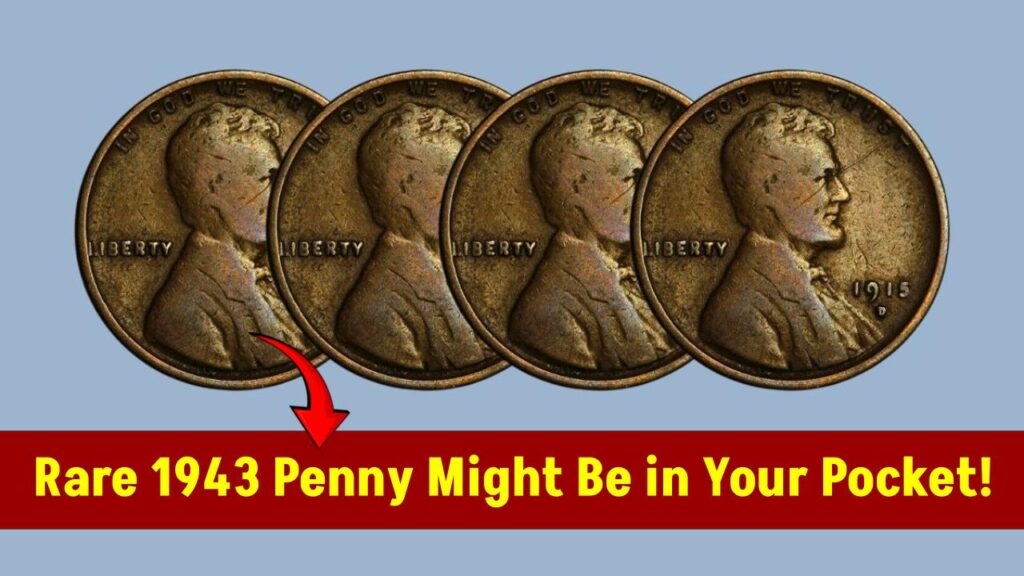Million Lincoln Wheat Penny: Could your spare change hold a hidden fortune? It’s not just a dream — collectors have paid as much as $1.9 million for a rare 1943 Bronze Lincoln Wheat Penny, a coin that could very well still be in circulation. In this article, we’ll help you understand how to spot one, what makes it so valuable, and why this penny has collectors (and everyday people) on high alert.

Million Lincoln Wheat Penny
| Feature | Details |
|---|---|
| Coin in Focus | 1943 Bronze Lincoln Wheat Penny |
| Potential Value | Up to $1.9 million |
| Why It’s Rare | Wrong metal used during World War II minting |
| Identifying Clue | Copper color instead of gray steel; doesn’t stick to magnet |
| Authentication Tip | Use services like PCGS or NGC |
| Related Rare Coins | 1909-S VDB, 1914-D, 1922 No D, 1944 Steel Penny |
While the odds are low, it’s entirely possible that a $1.9 million Lincoln Wheat Penny could be in your collection or pocket. By learning how to identify a 1943 bronze penny, avoiding mistakes like cleaning, and using expert authentication services, you could turn everyday change into a life-changing discovery. So, start checking those jars and wallets—you never know what treasure you might uncover.
Background – Why the 1943 Bronze Penny Is So Valuable
During World War II, copper was a vital material used for ammunition and military equipment. To conserve it, the U.S. Mint began producing pennies in 1943 using zinc-coated steel instead of the usual bronze. However, a small number of bronze planchets (coin blanks) from 1942 mistakenly made it into the minting presses.
These accidental coins are now considered some of the most sought-after errors in U.S. numismatic history.
Only a few dozen of these bronze pennies are known to exist. Their scarcity, historical context, and unique appearance make them highly collectible.
Million Lincoln Wheat Penny: How to Spot a $1.9 Million Lincoln Wheat Penny?
1. Look for the Year “1943”
If you have a penny from 1943 that looks copper-colored, that’s your first clue. Almost all 1943 pennies should be silver-gray (steel), not brown or red (bronze).
2. Conduct the Magnet Test
Steel is magnetic, bronze is not. Use a refrigerator magnet:
- If it sticks: It’s likely a common 1943 steel penny.
- If it doesn’t stick: You may have a bronze error coin.
3. Check the Mint Mark The mint mark is located below the date:
- No letter = Philadelphia Mint
- “D” = Denver Mint
- “S” = San Francisco Mint
All three mints accidentally struck bronze versions, though they are extremely rare from each.
4. Assess the Condition
Coins in mint or uncirculated condition command the highest value. However, even worn examples can be worth hundreds of thousands of dollars if verified as genuine bronze coins.
5. Get Expert Verification
Before celebrating, send your coin to a trusted coin grading and authentication service like PCGS (Professional Coin Grading Service) or NGC (Numismatic Guaranty Company). These services will verify the metal content and authenticity.
Other Rare and Valuable Lincoln Pennies You Should Know
Besides the 1943 bronze penny, here are other Lincoln Wheat Pennies worth checking:
| Year & Mark | Description | Value Range |
| 1909-S VDB | First Lincoln penny with designer’s initials | $700 – $2,000+ |
| 1914-D | Low-mintage Denver coin | $200 – $2,500+ |
| 1922 No D | Missing Denver mint mark | $500 – $20,000+ |
| 1955 Doubled Die | Misaligned double stamping | $1,000 – $10,000+ |
| 1944 Steel | Another metal mix-up; steel used instead of copper | $75,000 – $125,000+ |
Tips for Collectors & Beginners
Don’t Clean the Coin
Cleaning reduces numismatic value and can scratch the surface. Experts recommend leaving coins as-is.
Use Proper Storage
Store in acid-free holders or coin albums, away from heat and humidity. Coin flips and capsules are good choices for long-term safety.
Stay Informed
Follow auction results and collector websites. Some reliable sources include:
- PCGS Price Guide
- NGC Coin Explorer
- Heritage Auctions
Real-Life Auction Example
In 2010, a 1943-D bronze Lincoln penny sold for $1.7 million in a private sale. Another 1943 bronze penny fetched $1.9 million at a public auction in 2018. The high value reflects not only the coin’s rarity but also the historical intrigue around the wartime minting error.
This Penny Sold for $11 Million—Check Your Change Before You Spend a Fortune by Mistake
Is a Penny Really Worth $100 Billion? Let’s Uncover the Truth Behind Valuable Pennies
One of the Rarest U.S. Coins Ever Just Turned Up in a Storage Box—Here’s What It Means
FAQs on Million Lincoln Wheat Penny
Q1. Are all 1943 copper pennies valuable?
No. Most 1943 pennies are made of steel. Only those mistakenly made from bronze (copper-colored and non-magnetic) are rare and valuable.
Q2. Can I find these coins in circulation today?
It’s unlikely, but not impossible. Some have surfaced in pocket change, estate sales, or old coin jars.
Q3. How can I tell if a penny is bronze or steel?
Use a magnet or weigh the coin. A bronze penny weighs about 3.11 grams, while a steel penny weighs 2.7 grams.
Q4. What if I have a 1943 copper penny?
Send it to PCGS or NGC for authentication before selling or displaying it.
Q5. How do I sell a rare coin?
List it on reputable auction platforms or consult a professional numismatist. Never sell to unverified buyers.










